France Day 7: Normandie Rules
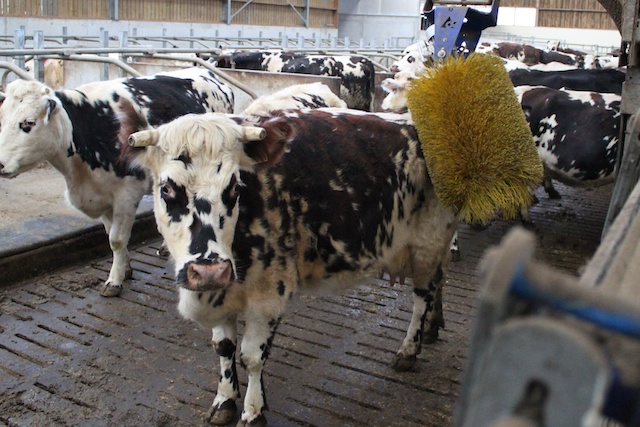 Normandie. Even now we think of the D-Day invasion immediately upon hearing its name. Soldiers storming the beach along the English Channel, innumerable soldiers dying in the cold, grey mist, as the tides of World War II shifted over to the Allies. The people of Normandie haven't forgotten the war or the role of the American soldiers in their liberation. It's ingrained into their pysche and the subject arose numerous times during our visit. While Normandie may conjure images of battle to many, I think first of apples, cider, and Calvados. I absolutely love single malt whisky, and I have a side affair going on with Bourbon, but Calvados is slowly making it's way into my heart, challenging me with its character and winning my affection with its beauty. The production of Calvados is perhaps the most rustic and traditional - it's literally the business of farmers. While Armagnac producers may have a more down-to-earth reputation than Cognac makers, neither are as humble or modest as Calvados producers. The Normans who make apple brandy in the north of France are out everyday milking cows, feeding hens, and harvesting crops. Calvados production just happens to be another task on the list of daily chores.
Normandie. Even now we think of the D-Day invasion immediately upon hearing its name. Soldiers storming the beach along the English Channel, innumerable soldiers dying in the cold, grey mist, as the tides of World War II shifted over to the Allies. The people of Normandie haven't forgotten the war or the role of the American soldiers in their liberation. It's ingrained into their pysche and the subject arose numerous times during our visit. While Normandie may conjure images of battle to many, I think first of apples, cider, and Calvados. I absolutely love single malt whisky, and I have a side affair going on with Bourbon, but Calvados is slowly making it's way into my heart, challenging me with its character and winning my affection with its beauty. The production of Calvados is perhaps the most rustic and traditional - it's literally the business of farmers. While Armagnac producers may have a more down-to-earth reputation than Cognac makers, neither are as humble or modest as Calvados producers. The Normans who make apple brandy in the north of France are out everyday milking cows, feeding hens, and harvesting crops. Calvados production just happens to be another task on the list of daily chores.
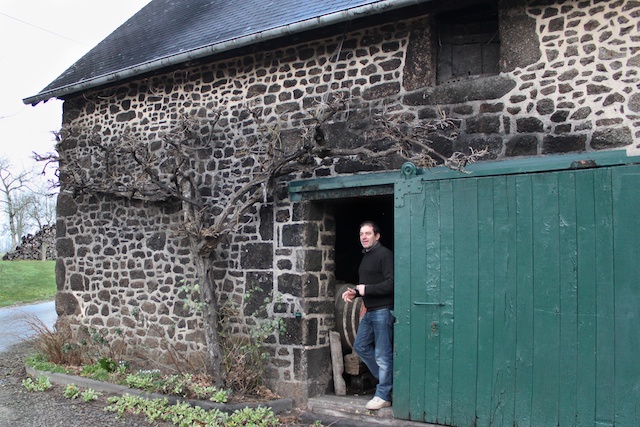
Didier and Martine Lemorton have a wonderful farm. About one hundred cows fill their barn and orchards of pear and apple trees surround it. You can tell a lot about their lifestyle by shaking their hands. Their palms are hard and calloused from the hard manual labor they perform on a daily basis. They've never been on an airplane and they've never had a day off. They don't have a still (most producers use a traveling still and hire someone to bring it), but they have tons of fruit and that produce needs to be preserved. Distilling it into brandy and then aging it in oak barrels is the best way to do so. Their fruit also happens to be quite excellent, which translates into excellent Calvados.
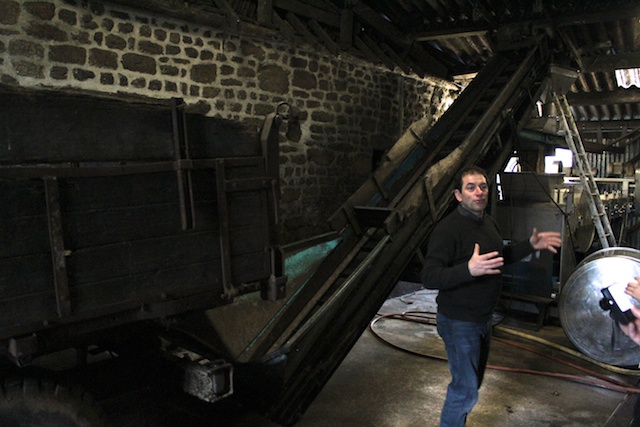
Located in the Domfrontais appellation of Calvados, their cepage must be at least 30% pear, although they choose to make brandies with about 60% pear and 40% apple. In Calvados, the fruit is not picked, but rather gathered only after it falls to the ground. After they're collected, the apples and pears are loaded into a machine that works like a wood chipper. Apples cannot be pressed or squeezed whole like grapes, but rather must be chopped into tiny pieces before juicing can take place. Didier describes the process in front of his processor above. Once the juice is collected, he ferments it inside large wooden barrels because that was the way his father did it. He has considered updating to stainless steel, but it's a large expense and his traditional methods seem to have worked so far. We've carried the Lemorton Reserve for years and hope to bring in some of the vintage bottles very soon.

Michel Huard is one of the newest producers than Charles has recently begun importing and we were very excited to see their operation. Jean Francois Guilloumet is now running things on his family's farm and was happy to show us around the site. Huard also uses both apple and pears in their cider and have a number of vintage distillations available. We lucked out and happened to arrive right in the middle of a distillation run.

The hired distiller had towed over his traveling alambic and was in the middle of loading in some more wood when we pulled up. Most Calvados producers use wood-burning stills as it's always been the tradition in the region seeing as there's plenty of fuel from the orchards. Jean Francois was distilling a two year old cider, which seemed quite interesting to us because we assumed they would be distilling shortly after fermentation has ended. He told us, however, that growing apples and pears is a tricky thing because the trees don't give fruit every year. If one vintage happens to yield lower fruit than another, then older ciders will be needed to make up for the shortage. Tasting the distilling cider was crazy. Like the wine from Cognac or Armagnac, it is not for drinking. The acidity is through the roof and the yeast is dominant. High acidity is essential for a fine distilled spirit.
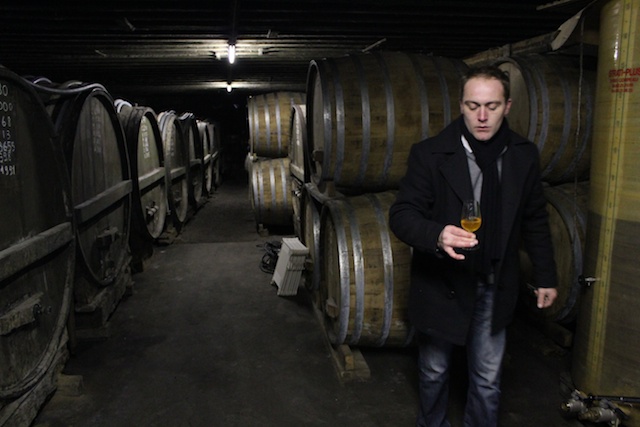
Tasting out of the cask, we realized again that we were perhaps naive in our assumption that single cask spirits from France would be just the same as single malt whisky. There's a reason most producers blend their barrels. The brandies from Huard were delicious on their own, but together in a blend they were much better. We tinkered with building our own out of 1999 and 2002 barrels that we thought had lovely potential.
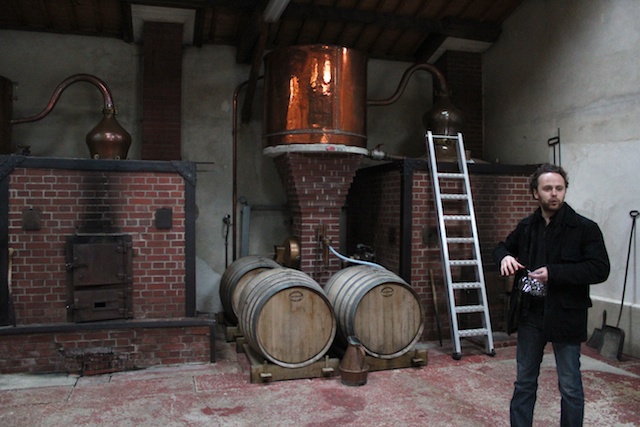
Jean Roger Groult makes one of the more successful Calvados that we carry. As a larger producer, Groult not only grows its own apples, but also acts as a negociant and buys fruit from other growers as well. They have a large facility in the Pays d'Auge further north of Domfrontais. After driving a few hours from Huard, we made our way into the Groult warehouses with Jean Francois as our guide.
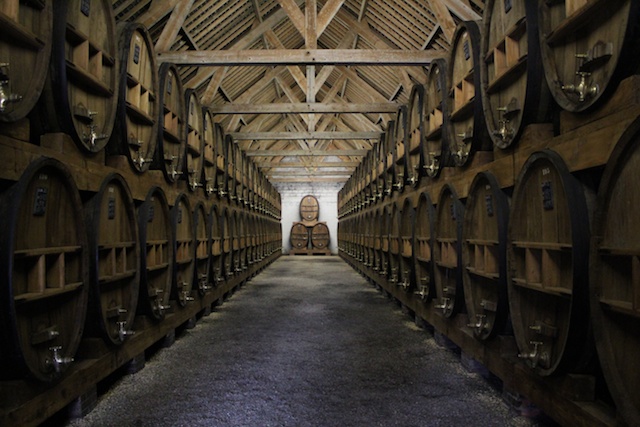
While other small farmers are storing their Calvados in small chais next to their barn, Groult is a big player in the industry with large supplies being aged in their larger, more modern facility. Calvados aging is an interesting thing because there are really no rules. You can use new wood, old wood, large barrels, small barrels, gigantic tanks, or whatever! As long as it tastes good you're alright. Deciding how to mature one's Calvados is key to establishing a distinct flavor and character.
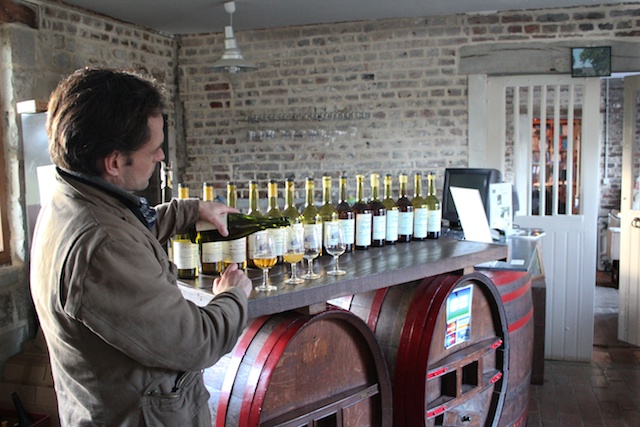
Another large producer and negotiant in the region is Dupont, about as large as Groult. Jerome was there to give us a tour through his Calvados selections and taste us on some delicious ciders.
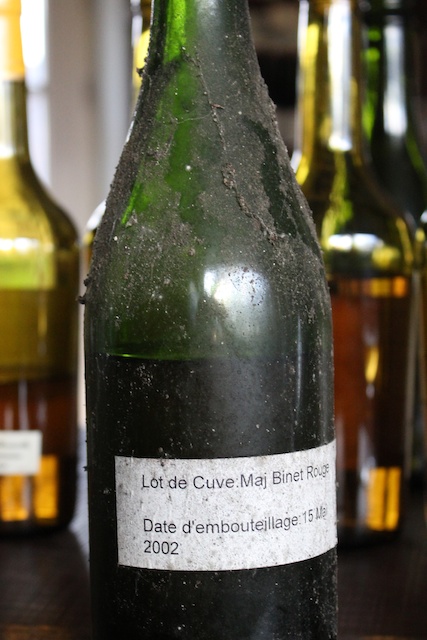
While Dupont is a well-known Calvados producer, they might be even more renowned for their cider. Part of the fun of Normandie is the omnipresence of cider instead of wine. Jerome even went down into the cellar, where he ages his own ciders for further consumption, and re-appeared with an unbelievable 2002 vintage cider that was slightly smoky and very complex. We killed that bottle in minutes.

After an extensive day of Calvados tasting, we drove another hour to the Camut property where a large steak from one of the local butchers was awaiting us. Camut needs an entire post (maybe two) to itself. They're like the DRC, first-growth, grand cru of Calvados all rolled into one. They're so much better than any other Calvados producer that it's almost unfair. I'll get back to this later though. Right now it's time to show you how Jean-Gabriel cooked this steak.

We sat around the fire, eating Camembert cheese, salmon tartar, and this gigantic steak that was cooked over the flames right next to us. Both David and I had the time our lives at this dinner and we quickly learned about how genuine the Camut family is. I already knew I loved their brandies, but now that I know how wonderful the family is, I am even more endeared to their products.
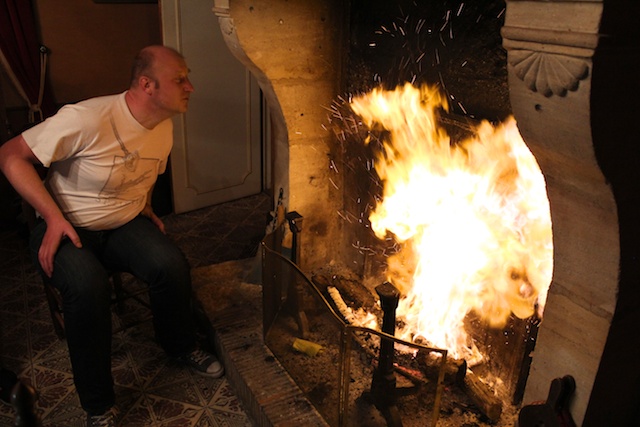
Things definitely got nuts. Before long we were competing to see who could come the closest to burning off their face by spitting high proof apple spirit back into the fire. More on this night later. It was certainly epic.
-David Driscoll
